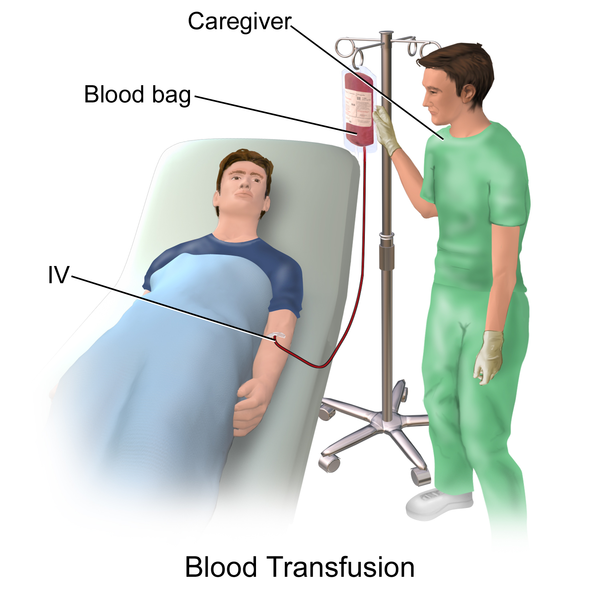Pain is an undeniable reality that each of us encounters at some point in life. While most pains are fleeting, vanishing once the underlying cause is addressed, there exists a tormenting kind that persists and takes a toll on every aspect of life. Chronic pain, the elusive agony that defies resolution, transforms the once-familiar world into a nightmarish realm. As sleep evades, appetites wane, and depression creeps in, the very essence of living becomes compromised. This article seeks to shed light on this complex and burdensome condition, exploring its nature, causes, and the pursuit of effective treatments.
What is Chronic Pain?
Chronic pain is a common problem affecting about 20% of the world’s population, with a higher prevalence among older adults. Recent Australian studies have shown that younger age groups tend to experience less pain, with approximately 75% pain-free Aussies aged 18 to 35. Nonetheless, the number of chronic pain patients is increasing annually, affecting even the younger generation.
To grasp the concept of chronic pain, it is important first to understand the nature of pain itself. Pain occurs when there is potential or actual physiological or emotional damage to the body. Nerve receptors transmit physical pain sensations to the brain, triggered by factors like burns, cuts, bruises, headaches, and stomach pains.
Chronic pain refers to a prolonged period of pain experienced by an individual. Researchers debate the exact duration that qualifies as “chronic,” but the widely accepted standard is three months. If the pain persists beyond the clinically indicated recovery period, the doctor may suspect chronic pain.
How Does Chronic Pain Differ from Acute Pain?
Acute pain is a biologically determined protective reaction of the body designed to safeguard individuals from harm. For instance, when someone touches a hot surface, they instinctively pull their hand back due to the efficient pain transmission system.
In contrast, chronic pain is debilitating; its main difference lies in its persistence. While acute pain results from damage or internal inflammation, chronic pain may arise from a minor injury that eventually leads to changes in the central nervous system. That’s why treating chronic pain is a long and uncertain process, as it may only partially disappear even with an array of therapeutic interventions.
What Causes Chronic Pain?
Numerous factors can contribute to chronic pain, including the following:
- Osteoarthritis, or deterioration of the cartilage in the joints
- Various back problems and general musculoskeletal disorders, including tendonitis and osteoporosis
- Neurological disorders, such as migraines and neuralgia.
Who Is at Risk of Chronic Pain?
While a complete understanding of chronic pain remains elusive, researchers have identified certain predisposing factors:
- High-intensity initial pain: as severe short-term pain can alter brain anatomy, it may increase the likelihood of chronic pain in the future.
- Mental health: conditions like anxiety, depression, and paranoia are often associated with chronic pain.
- Underlying conditions: people with chronic illnesses may also be at risk, as their bodies can become overwhelmed, leading to physical breakdowns and chronic pain.
Certain risk factors, such as age, gender, cultural and socioeconomic background, history of injury or violence, and hereditary factors, may increase the likelihood of chronic pain, although they are not modifiable. However, focusing on prevention, early diagnosis, and treatment can still improve outcomes.
Is There a Treatment for Chronic Pain?
Ideally, treating chronic pain involves addressing the underlying cause as soon as possible. Whether it’s arthritis, cancer, neurological disease, or injury-related pain, early treatment enhances prognosis and outcomes.
However, chronic pain can persist even after the cause has disappeared or when no explanation can be found. In such cases, the goal shifts to pain management, control, and relief through a multidisciplinary approach. This includes using various physiotherapy methods, pain medications, and psychological therapy. A team of healthcare professionals, including neurologists, pain specialists, occupational therapists, and physical therapists, collaborate to develop a comprehensive and effective treatment plan.
In conclusion, there is no definitive cure for chronic pain, but various treatments are available to reduce and manage it effectively. Research shows that the right combination of treatments and symptom management can lead to a 30% reduction in pain. Though not a complete solution, this improvement significantly enhances the quality of life for those experiencing chronic pain. Scientists and clinicians continue to conduct research with the hope of better understanding and treating chronic pain in the future.
How to Cope With Chronic Pain?
Incorporating lifestyle changes into one’s daily routine can be transformative for those facing the challenges of chronic pain. By embracing holistic approaches and actively participating in their own well-being, individuals can gain greater control over their lives, fostering resilience and empowering their journey towards a pain-free and fulfilling existence.
One major factor exacerbating chronic pain is stress. Learning to cope with stress through various means can reduce pain significantly. Psychological therapies, tailored to address daily life stressors and the general burden of a chronic illness, can help people find relief and avoid exacerbating their chronic pain.
Despite being considered a risk factor for some health problems, exercise holds the potential to alleviate chronic pain and stress simultaneously. Collaborating with a physical therapist to devise a personalised exercise plan is an excellent way to address the unique challenges posed by each type of chronic pain. Even low-impact activities like walking and dynamic stretching can benefit those suffering from chronic pain.
In addition, the role of nutrition in overall health cannot be overstated. While food may not directly cause chronic pain, it undoubtedly affects a person’s well-being. Poor nutrition leads to declining health, which in turn impacts the occurrence of chronic pain. Opting for a healthy and nutrient-rich diet provides the body with the resources to combat daily pain effectively and promote healing.
Lastly, recognising the importance of sleep is crucial for maintaining overall well-being. Adequate sleep allows the body to physically and mentally recover, alleviating the profound mental and physical stress experienced by those with chronic pain. By prioritising the recommended amount of quality sleep, the body can harness that crucial time to repair and heal at the molecular and cellular level, preventing more severe health issues in the long run.
How to Prevent Chronic Pain?
Preventing chronic pain requires a holistic and proactive approach, with individuals taking charge of their well-being through lifestyle choices that foster optimal health. By empowering themselves with regular sleep, a nutritious diet, and timely and effective treatment for illnesses, people can pave the way to a life free from the burden of chronic pain.
Be proactive in managing your health through regular check-ups and seeking medical attention when needed, so you can address potential health issues before they escalate into chronic pain conditions.





